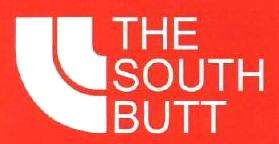I just came across a great blog post by a fellow attorney, J. Michael Hurst at Keating Muething & Klekamp PLLC. Apparently, 19-year old Jimmy Winkelmann created a company called The South Butt LLC, which was meant as a parody of The North Face.
Here are the two logos at issue:


Apparently, Jimmy has a great sense of humor and set up his company to sell some t-shirts and hopefully raise money to cover his college tuition (he did end up raising something like $100,000, according to Hurst). I love this disclaimer on his website:
We are not in any fashion related to nor do we want to be confused with The North Face Apparel Corp. or its products sold under “The North Face” brand. If you are unable to discern the difference between a face and a butt, we encourage you to buy North Face products.
(Sound of author trying to compose herself after period of robust laughter)
Anyhoo….long story short, management at The North Face failed to see the humor in this situation (or apparently the difference between a face and a…. bottom) and actually slapped Winkelmann with an expensive trademark infringement lawsuit.
Hurst’s post does a great job of analyzing what the North Face would have to establish to prevail on their claim (something Hurst doesn’t think they will succeed in doing – and I agree with him).
But this does bring up a couple of really important points for those of us launching and running businesses.
(1) Don’t Use A Name That Is Already In Use!
When you are choosing a name and logo for your company, make sure to research whether that name is in use already (particularly in the industry that your company will be in) and make sure you do not create a logo that looks like one from another company (as best as you can determine). You need to search your state records for names (usually the Secretary of State’s office will have the ability to search LLCs and Corporations in your state; also search any other state in which you plan to do business now or in the future). Also search national records, such as the TESS at the US Patent and Trademark office. I also recommend doing a Google search for the name to see if the domain is taken (or any variation of it) and to see if anyone is already using that word or combination of words for their business already.
Right or wrong, big companies generally are not shy about enforcing their trademarks (as you can see in the North Face case) and you don’t want to end up getting a cease and desist letter from an in-house legal department just after you spent your last red-cent having your logo and branding designed.
If your name or logo could cause confusion between your company and one with an already established trademark, you could be found to be infringing on their trademark. If you are, you could be forced to change your name, logo, packaging and anything else that uses the infringing mark. If you have any market traction already, you would then have to rebuild your brand and lose the work already put into marketing the infringing name/brand/logo. Add to that potential money damages and attorneys fees, and not doing your homework about your trademarks becomes an expensive (and potentially fatal) detour for your business.
(2) Protect Your Own Trademarks!!
Once you are sure you aren’t at risk of infringing on someone else’s trademarks, make sure that you have properly trademarked your own logo, tag lines and even product names and packaging so that you have the ability to protect your intellectual property and branding if someone does attempt to infringe on your trademark in the future.
Generally, “use” of the trademark itself does give you some protection (use the ™ symbol as soon as you start using anything you want trademarked). That means, always include the symbol on your website, on all of your advertising, correspondence/emails with customers, and written materials at a minimum.
But the best way to protect yourself if to file with the US Patent and Trademark Office in order to have a “registered” trademark (at which point you use the symbol ®).
Of course, I recommend hiring a good lawyer for this, as the paperwork can be tricky and you want to make sure it is done right. However, there are services out there that can help you file your own paperwork, such as Legal Zoom, so you have that less expensive option.
Just don’t decide to NOT trademark your branding. That could be an expensive mistake if someone else decides to use your name, logo or a variation of your logo (deliberately or without knowledge of yours). If you don’t have a registered trademark, you might not be able to stop them from using it, you will have less protection under the law to go after them, and might even lose your right to use your own name or logo in the future.
I’ve glossed over this because it is really fairly complicated subject, so make sure you find someone knowledgeable in trademarks to help you navigate this process. (And now for the required disclaimer: this post is NOT intended to give legal advice, so seek your own independent counsel for that!)
And if you have any experience with trademarks for your business (positive or negative), or questions, we want to hear from you so make sure to post a comment below!
You can read all of Hurst’s post at the link below.
http://intellectual-property.kmklaw.com/Trademark-Parody






